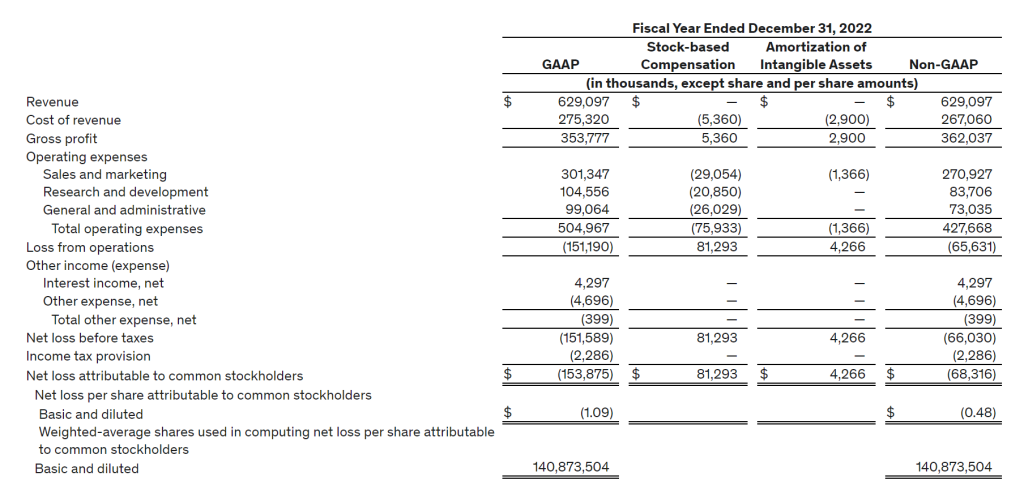Before we dive deep into the SWOT analysis, let’s get the business overview of Udemy. Udemy is an online learning platform that offers various courses in various fields, including business, technology, arts, languages, and personal development. Founded in 2010 by Eren Bali, Oktay Caglar, and Gagan Biyani, Udemy has become one of the largest platforms for online courses, allowing anyone to develop new skills or enhance existing ones.
Business Model:
Udemy operates on a marketplace model where independent instructors create and upload their courses, and Udemy provides the platform to host and sell these courses to a global audience. Instructors can offer courses for free or set a price for their courses, with Udemy taking a percentage of the revenue generated from paid courses.
Udemy Business Model: A marketplace of vibrant knowledge
Course Offerings:
Udemy’s course catalog is expansive, featuring thousands of courses across a wide array of subjects. The platform is known for its diverse course offerings, ranging from professional and technical courses to hobbyist and personal development classes.
Instructors and Content Creation:
One of Udemy’s strengths is its open approach to content creation, where virtually anyone can become an instructor and offer courses. This has resulted in a vast and varied catalog. Instructors include industry experts, professionals, educators, and enthusiasts.
Learning Experience:
Courses typically include video lectures, written materials, quizzes, and interactive forums where students can interact with instructors and fellow students. Many courses also offer certificates of completion.
Target Audience:
Udemy targets a broad audience, including individual learners seeking personal or professional development and businesses and organizations looking to train their employees. Udemy for Business is a segment of the platform offering a curated selection of courses tailored for corporate training.
Revenue Streams:
Udemy’s revenue comes primarily from course sales. The platform offers both individual course sales and subscription-based models for businesses. Instructors earn a share of the revenue from the sale of their courses, based on whether the student was brought in by the instructor’s marketing efforts or through Udemy’s platform.
Financial Performance: Refer to the image below

Here is the SWOT analysis for Udemy
A SWOT analysis is a strategic planning tool used to evaluate the Strengths, Weaknesses, Opportunities, and Threats of a business, project, or individual. It involves identifying the internal and external factors that can affect a venture’s success or failure and analyzing them to develop a strategic plan. In this article, we do a SWOT Analysis of Udemy.
SWOT Analysis: Meaning, Importance, and Examples
Strengths
- Extensive Course Catalog: Udemy offers a vast array of courses across a wide range of subjects, catering to diverse learning needs and interests. This variety is a significant draw for learners.
- Flexibility and Accessibility: Courses on Udemy are available on-demand, allowing learners to study at their own pace and according to their schedules. This flexibility is highly appealing in today’s fast-paced world.
- Affordable Pricing: Many courses on Udemy are affordable, making them accessible to a broad audience. Additionally, frequent discounts and promotions further enhance their appeal.
- Global Reach: Udemy’s platform is accessible worldwide, offering courses in multiple languages, which broadens its market reach and appeal.
- User-Friendly Platform: The platform is intuitive and easy for instructors and learners to navigate, contributing to a positive user experience.
- Open Marketplace Model: Udemy’s model allows anyone to create and offer a course, democratizing education and ensuring a constant influx of new content.
- Quality of Instructors: Many courses on Udemy are taught by industry experts and professionals, which ensures a high level of practical knowledge and expertise.
- Corporate Training Solutions (Udemy for Business): Udemy’s corporate training program provides a comprehensive learning solution for businesses, a growing segment.
- Community and Engagement: Udemy fosters community through interactive features like Q&A with instructors and peer discussions, enhancing the learning experience.
- Adaptability to Trends: Udemy’s course offerings often adapt quickly to market trends and new technologies, keeping the platform relevant and up-to-date.
- Certificate of Completion: Many courses offer certificates upon completion, which can appeal to learners looking to bolster their professional credentials.
Weaknesses
- Inconsistent Course Quality: Given that almost anyone can become an instructor on Udemy, course quality can vary significantly. Unlike platforms that partner with universities or have strict instructor vetting processes, Udemy’s courses might not always meet high educational standards.
- Lack of Formal Accreditation: Most courses on Udemy do not offer accredited certifications or degrees. This can be a significant limitation for learners seeking formal education or qualifications recognized by employers and educational institutions.
- Dependence on Instructors for Content: Udemy relies heavily on independent instructors to generate course content. This model can lead to challenges in maintaining a consistent standard and offering courses in emerging or niche areas.
- Revenue Share Model Challenges: The revenue-sharing model with instructors could be less attractive to high-quality educators compared to direct compensation models, potentially affecting the platform’s ability to attract top talent.
- Limited Interaction and Support: The nature of pre-recorded courses means limited direct interaction between students and instructors, which can impact the learning experience, particularly for complex subjects.
- Piracy and Intellectual Property Issues: There have been instances of course content piracy and unauthorized sharing, which can affect the revenue and motivation of content creators.
- Completion Rates: Like many online learning platforms, Udemy may struggle with low course completion rates, as self-paced learning requires high levels of motivation and discipline from students.
- Market Competition: The e-learning market is highly competitive, with many platforms offering similar or more specialized services. Standing out and retaining a unique value proposition is a continuous challenge.
- Limited Engagement Tools: The platform might lack advanced engagement and interactive tools found in more sophisticated learning management systems, which can affect student engagement.
Opportunities
- Growing Demand for Online Learning: The increasing acceptance of online education globally, particularly in the wake of the COVID-19 pandemic, presents a significant opportunity for Udemy to expand its user base.
- Expansion into New Markets: Udemy can tap into emerging markets where there is a growing demand for accessible and affordable education, especially in areas with limited access to traditional educational resources.
- Corporate Training and Development: There’s a growing trend of companies investing in their employees’ continuous learning and development. Udemy can expand its Udemy for Business platform to cater to this corporate need.
- New Course Development: Developing courses in emerging fields and technologies, such as artificial intelligence, renewable energy, and data science, can attract new learners and meet the changing needs of the job market.
- Partnerships with Educational Institutions: Collaborating with colleges and universities to offer supplementary courses or credit-eligible programs could enhance Udemy’s credibility and reach.
- Mobile Learning: Optimizing content for mobile devices can attract users who prefer learning on-the-go, capitalizing on the increasing use of smartphones for educational purposes.
- Enhanced Certification Programs: Offering more structured and comprehensive certification programs, potentially in partnership with industry organizations, could increase the value of Udemy’s courses for professional development.
- Integration of Advanced Technologies: Incorporating advanced technologies like augmented reality (AR), virtual reality (VR), and AI to create more interactive and immersive learning experiences could differentiate Udemy’s offerings.
- Lifelong Learning Trends: Capitalizing on the trend towards lifelong learning and skills upgrading, especially among older demographics, can open up a new customer segment.
- Increased Focus on Soft Skills: Developing courses focusing on soft skills, such as leadership, communication, and emotional intelligence, can cater to a broader professional audience.
- Subscription Models: Exploring different pricing and subscription models could appeal to different user segments and stabilize revenue streams.
- Localized Content: Creating courses tailored to specific regional or cultural needs can help Udemy appeal to a more diverse global audience.
Threats
- Intense Competition: The e-learning market is highly competitive, with numerous platforms offering similar services. Major players like Coursera, edX, and LinkedIn Learning (formerly Lynda.com), along with traditional educational institutions expanding into online education, pose significant competition.
- Rapid Technological Change: The fast pace of technological advancement in online education could render some of Udemy’s current offerings or platform features obsolete if not regularly updated.
- Quality Control Issues: Given Udemy’s open platform model where anyone can create a course, maintaining consistent quality across all courses can be challenging. Poor quality courses could harm Udemy’s reputation.
- Shift in Consumer Preferences: Changes in what learners expect from online courses, such as a preference for more interactive or accredited courses, could impact Udemy if it fails to adapt quickly.
- Regulatory Challenges: As online education becomes more mainstream, it could attract more regulatory scrutiny, especially regarding accreditation and quality standards.
- Market Saturation: With the proliferation of online courses and resources, the market could become saturated, making it difficult for Udemy to maintain its growth and attract new users.
- Cybersecurity Risks: Being an online platform, Udemy is vulnerable to cybersecurity threats. Any significant data breach could lead to a loss of trust among users.
- Economic Downturns: Global economic instabilities can reduce spending on non-essential services like online courses, affecting Udemy’s revenue.
- Dependence on Instructors: Udemy’s reliance on independent instructors for course content creation could be a threat if these instructors decide to move to other platforms or start their platforms.
- Value of Certifications: As the job market evolves, the value of non-accredited certifications like those offered by Udemy could be questioned by employers, impacting the platform’s relevance for professional development.
- Global Expansion Challenges: Expanding into new international markets comes with challenges such as localization, competition from local platforms, and varying regulatory environments.
- Free Educational Resources: The availability of free educational resources and content on platforms like YouTube or through open courseware initiatives could also threaten Udemy’s paid course model.











